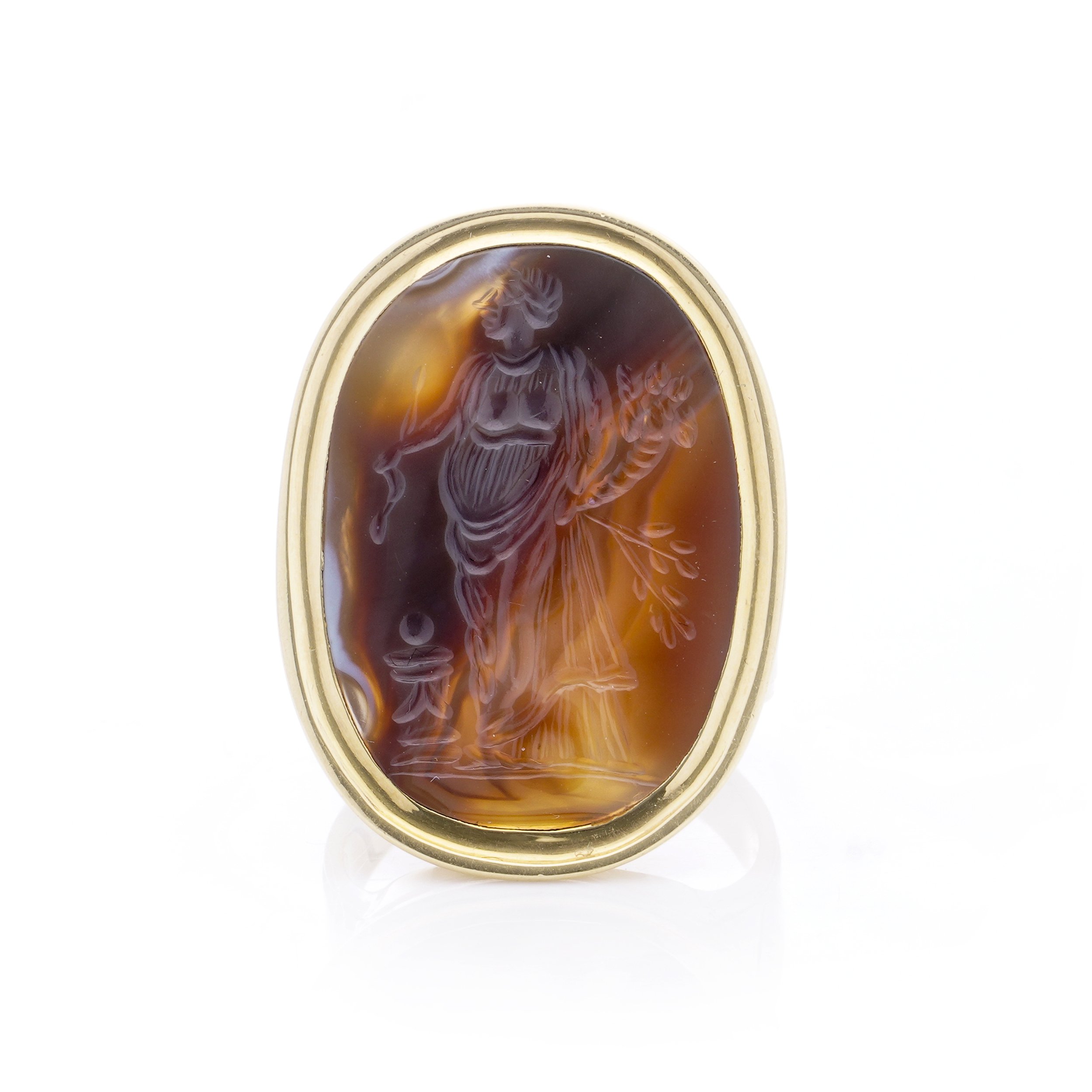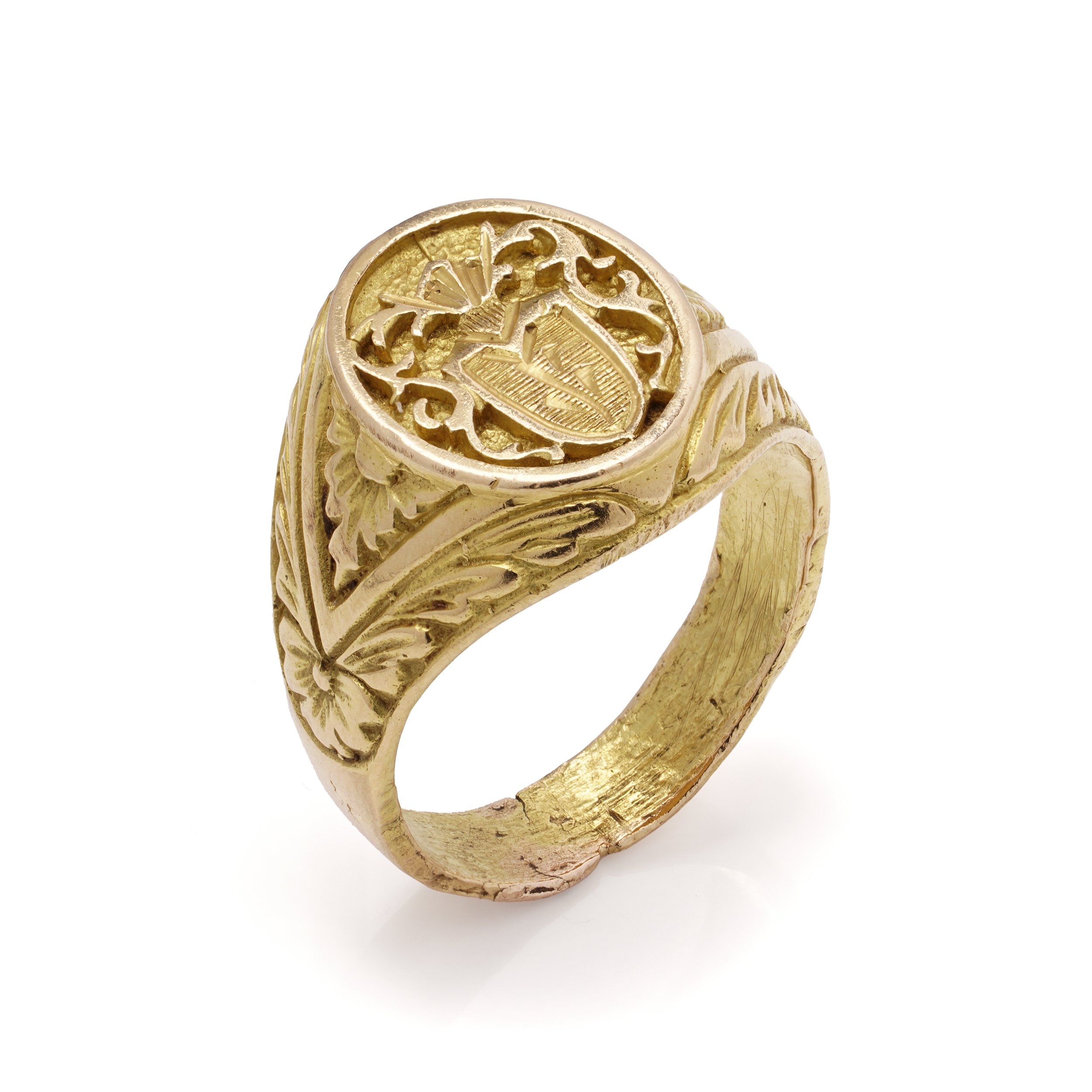Where Did King Charles Get His Signet Ring From?
Where Did King Charles Get His Signet Ring From?

King Charles III's signet ring represents one of the most enduring symbols of British royal tradition, carrying with it centuries of history, power, and ceremonial significance. This remarkable piece of royal regalia tells a story that spans generations, connecting the current monarch to his predecessors through an unbroken chain of royal heritage.
Royal Fact
The tradition of royal signet rings dates back over 1,000 years, with the earliest examples found in Anglo-Saxon royal burials. These rings were not merely decorative but served as official seals of royal authority.
The Royal Inheritance: A Ring Passed Through Generations
King Charles III's signet ring is believed to have been inherited from previous monarchs, continuing a tradition that has been carefully preserved within the British Royal Family for centuries. Unlike many pieces of royal jewellery that are created anew for each monarch, signet rings often pass from ruler to ruler, accumulating historical significance with each generation.
The ring likely originated during the reign of one of Charles's predecessors, possibly dating back to the Victorian era or even earlier. Historical records suggest that many royal signet rings were commissioned by Queen Victoria or her immediate successors, establishing designs that would become templates for future generations.
Did you know? Royal signet rings are traditionally worn on the little finger of the left hand, a practice that dates back to ancient Roman times when this finger was believed to have a direct connection to the heart.
The Symbolism and Design of Royal Signet Rings
The engraving on King Charles's signet ring features the Royal Coat of Arms, a complex heraldic design that represents the monarchy's power, authority, and connection to the British Isles. This intricate engraving is not merely decorative but serves as a miniature representation of royal sovereignty.
The coat of arms typically includes the three lions of England, the lion rampant of Scotland, and the harp of Ireland, all surrounded by the Order of the Garter motto "Honi soit qui mal y pense" (Shame on him who thinks evil of it). These elements combine to create a powerful symbol of unified royal authority across the United Kingdom.
Signet rings used by Egyptian pharaohs and Roman emperors as official seals
European monarchs adopt signet rings for sealing important documents and treaties
Modern royal signet ring traditions established, with standardized designs and protocols
King Charles III continues the tradition, wearing his inherited signet ring at official ceremonies
Historical Significance and Ceremonial Use
Historically, royal signet rings served a crucial practical purpose in governance. Before the age of modern authentication methods, these rings were used to seal important documents, treaties, and royal proclamations. The impression left by the ring in hot wax served as an official guarantee of the document's authenticity and the monarch's approval.
While the practical use of signet rings for document sealing has largely become ceremonial in modern times, King Charles III continues to wear his signet ring during important state functions, royal ceremonies, and official portraits. This practice maintains the visual connection between the current monarchy and its historical roots.
Royal Protocol
The King's signet ring is considered part of the "lesser regalia" - important royal items that, while not used in coronations, play significant roles in the day-to-day symbolism of monarchy.
The Craftsmanship Behind Royal Signet Rings
Royal signet rings represent the pinnacle of traditional British craftsmanship. These pieces are typically created by master engravers and goldsmiths who specialize in heraldic work. The process of creating a royal signet ring involves multiple stages, from the initial design and approval of the heraldic elements to the precise hand-engraving of the coat of arms.
The rings are usually crafted from high-quality gold, often 18-carat or higher, ensuring durability for pieces that may be worn daily and passed down through generations. The engraving process itself can take several weeks, as each element of the coat of arms must be precisely rendered in reverse (as it appears on the ring) so that it creates the correct impression when used as a seal.
Many royal signet rings are created by Garrard & Co, the Crown Jewellers, who have held royal warrants for over 150 years and are responsible for maintaining and creating pieces for the Royal Collection.
Signet Rings in Modern Royal Life
Today, King Charles III's signet ring serves multiple purposes beyond its historical significance. It acts as a personal identifier, a symbol of continuity with past monarchs, and a reminder of the responsibilities that come with royal office. The ring is frequently visible in official photographs and during public appearances, serving as a subtle but constant reminder of royal authority.
The tradition extends beyond the monarch himself - other members of the Royal Family, including Prince William and other senior royals, also wear signet rings bearing their own heraldic devices or family crests, maintaining this ancient tradition across the broader royal household.
Expert Signet Ring Consultation
Have questions about signet rings? Whether you're looking to buy, sell, or learn more about these fascinating pieces of history, our experts are here to help.
Consult with an ExpertDo You Have a Signet Ring to Sell?
Whether it's a family heirloom, vintage piece, or antique signet ring, our experts can provide professional valuations and competitive offers. We specialize in historical and heraldic pieces with particular expertise in British and European signet rings.












